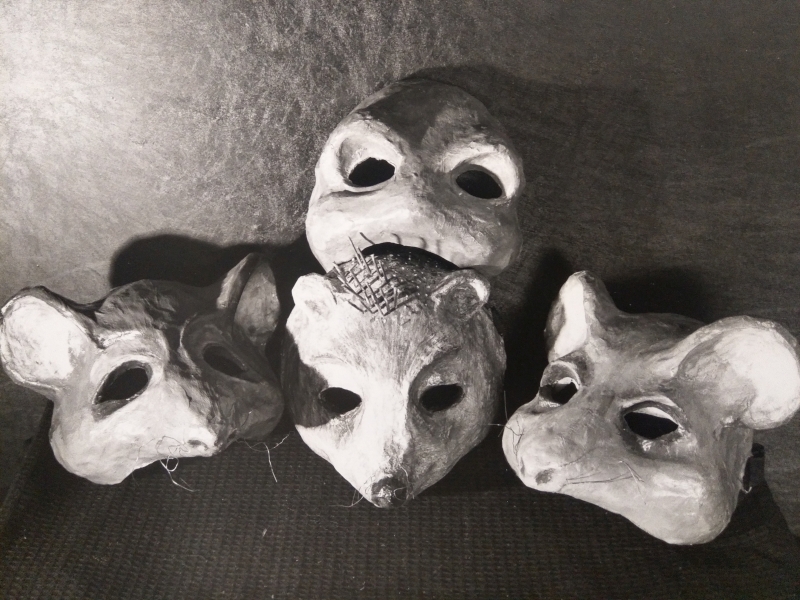Text: Editorial Team | Section: About w/k / Art-Related Science
Summary: w/k introduces its new section, Art-Related Science, which is split into two parts. The first part presents individual studies on scientists who draw on artistic concepts/methods/results in their teaching, research or specialist publications. The second part includes contributions dealing with more general questions such as: what forms of dialogue and exchange exist between science and art, and what goals do they respectively pursue?
In establishing the new section Art-Related Science, the editorial team has two goals in mind: firstly, to incorporate individual studies of a new kind into the w/k programme, and secondly, to integrate more general contributions of a certain kind that have not yet found their place in the online journal.
New kinds of individual studies
Articles by Artists (section 1), Articles about Artists (section 2) and Interviews with Artists (section 3) have been fundamental features of the w/k programme from the outset. In individual studies they aim to identify as precisely and as comprehensively as possible the different science-art connections fostered by artists – especially visual artists – and to explore the artistic concepts behind them in order to achieve a deeper understanding of these art forms. In April 2019 we added section 4: Art-Related Science.
Art-Related Science refers to scientists who draw on artistic concepts/methods/results in their teaching, research or specialist publications. The first article published in this section is the essay Vorlesungstheater, written by Peter Tepe, editor of w/k. In the 1990s, he used artistic elements in several of his lectures, whereby a scientific-artistic university festival in 14 stages – an entire lecture staged in theatrical form – played a special role. The full article, which goes into more detail, was published in the German section of w/k in 2019 and is now finally published here, albeit severely delayed; for now, this merely serves to exemplify the concept of this new type of individual study.
Our claim is that those individuals who can be called science-related artists in a broader sense correspond to similar exemplars among scientists whom we call – also in a broader sense – art-related scientists. Scientists who use a certain art form to perform their academic teaching correspond to the painters whose work, for example, makes reference to quantum physics: the artist whose practice is science-related is the mirror image of the scientist whose approach is art-related.
Thus, one of the main goals of our new section 4 is to explore the many individual connections between science and art fostered by scientists, as well as the scientific concepts behind them, in order to enable a deeper understanding of these science forms. Like sections 1–3, section 4 also follows a set of uniform principles to obtain comparable results.
It is unlikely that section 4 will generate as much content as sections 1–3 in the near future. Therefore, rather than creating three new sections for individual studies, w/k has split Art-Related Science into three subsections: the introduction to each contribution in this category will state whether this is an Article by an Art-Related Scientist (section 4a), an Article about an Art-Related Scientist (section 4b) or an Interview with an Art-Related Scientist (section 4c).
The border-crossers and the collaborations between at least one artist and at least one scientist occur both among science-related artists (in the broader sense) and art-related scientists (also in the broader sense). The science-related artists (in the narrower sense) – those who draw on scientific theories/methods/results in their practice – are mirrored by the art-related scientists (in the narrower sense).
New kinds of general contributions
The new section Art-Related Science also integrates more general contributions of a certain kind that have not yet found their way into the online journal. We classify a scientist who collaborates with artists in a broader sense of the word in order to better communicate the results of their research to their scientific colleagues, students or even the wider public, as a special kind of art-related scientist. From now on, texts of a general nature dealing with such science-art connections will also have a place in w/k.
Section 4 is for contributions dealing with such questions as:
- How can a mutually beneficial exchange between art and science come about, and what framework does this require?
- When communicating scientific research results, can it be useful to draw on art forms such as theatre or comics, as well as humour, as a vehicle?
- What forms of dialogue and exchange already exist between science and art, and what goals do they each pursue?
- What role can scientific communication play in the interaction between art and science?
- Is it possible to develop a common language that spans art and science?
The editorial team hopes that the new section 4 will be of interest to its users and that scientists who, for example, have experimented or continue to experiment with artistic elements in their teaching, research and publications will feel motivated to share their exciting experiences and to elaborate on the respective interplay between science and art.
Image above the text: The masks used in the Vorlesungstheater (1993/94). Photo: Susanne Stemmler.
How to cite this article
Editorial Team (2022): Art-Related Science - A new Section in w/k. w/k–Between Science & Art Journal. https://doi.org/10.55597/e7179


Be First to Comment